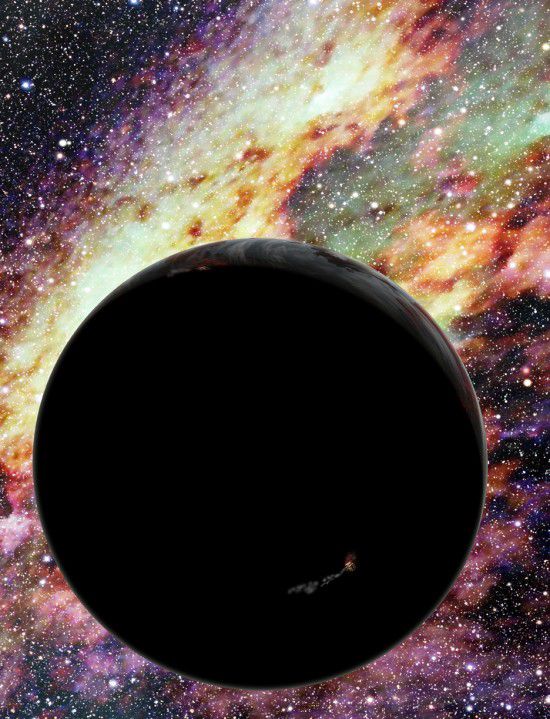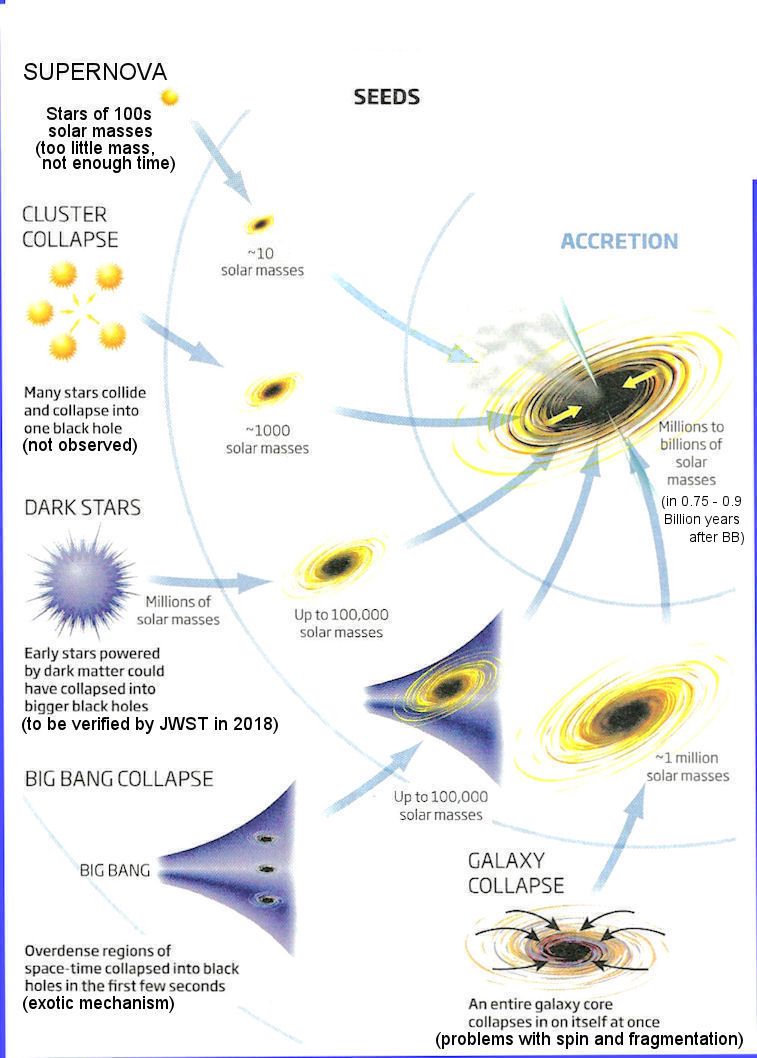Milky Way
Milky Way
Thank God for the wonderfully magnificent Milky Way galaxy. If it weren't for this galaxy we wouldn't be here.
As it turns out, galaxies are like the cells in our body. Galaxies make up the universe, and there are hundreds of billions of them, perhaps more than we realize, and they are the cellular units of the universe's body.

What's so strange about galaxies is that after the Big Bang only hydrogen and helium existed, and yet we see all these galaxies today. What the heck happened?
What happened is that black holes were the masters at forming galaxies. And these black holes are supper massive. They are millions of times more massive than our sun. Most big galaxies have a supermassive black hole in their centers. There is no doubt that these huge black holes were responsible for the formation of galaxies like the Milky Way.

The problem for astrophysicists is how to explain how supermassive black holes formed and how they managed to form galaxies. Supermassive black holes started out as large black holes from the supernovae of large blue stars. Somehow, they grew to be the big boys of black holes, as much as millions if not billions of times the mass of the sun, and they formed into quasars, emitting more light than many galaxies together.
Astrophysicists think that super massive black holes did not form from large stars but from some other source. Their reason for this is that there was not enough time for the first black holes to grow into supermassive size quick enough to explain the early appearance of galaxies. The question is: which came first; the galaxy or the black hole?

The new theory is that a giant gas cloud collapses into a super sized black hole without forming a star. The idea is that there is too much mass and gravity for it to form a star and it just smashes space into a super massive black hole. This could explain how quasars (supermassive black holes that emit massive amount of energy) formed first before stars. This is just a theory, but astronomers are looking for evidence. Evidence consists of a supermassive black hole in a dwarf galaxy. The black hole is way too massive for the size of a tiny galaxy. The black hole is more developed than the galaxy, indicating that the black hole came first. Astronomers have found more examples of this.
The next question is: how does a magnificent galaxy like the Milky Way develop around a supermassive black hole? Obviously, the supermassive black hole in our galaxy was surrounded by a maelstrom of gas and dust that caused it to glow. Black holes are not exactly black. They emit more energy than you realize. Not all of the matter around the black hole is consumed. The supermassive black hole forms a quasar, which emit highly energetic jets blast from the supermassive black hole's poles. These jets crash into nearby galaxies condensing gas and dust into stars. There is direct evidence for this star formation effect. In other words, supermassive black holes are responsible for forming stars that ultimately orbit around the black hole. It is believed that this is how our star formed. In the chaos of galaxy formation, collisions are inevitable. Violence is how the Milky Way formed.
Another thing that helps form large spiral galaxies like ours is the fact that newly forming galaxies attract and incorporate smaller galaxies in order to grow. Our solar system ended up in a less violent neighborhood of the Milky Way, which is a good thing, because it allowed life to form and survive. Astronomers believe this was the result of the incorporation of a smaller galaxy called Sagittarius. It created spiral arms and knocked our star out further from the center of the galaxy.
Our supermassive black hole is still active, having recently shown evidence of becoming brighter, a result of heating gas and dust circling around it to millions of degrees. Heated gas will not form stars. This heating effect is believed to be a regulator, controlling star formation. We don't want new, especially very large stars, to form. They would represent a threat because of excessive radiation.
Eventually, Andromeda will crash into the Milky Way, destroying the spiral shape of our galaxy. The two supermassive black holes will collide and form a really super sized black hole that will be in the center of an elliptical galaxy ( a ball of stars). This will happen in approximately 4 to 5 billion years. Too bad we can't be here when this happens. It would be the most spectacular sight ever.
Thanks for reading.
Bạn đang đọc truyện trên: Truyen247.Pro